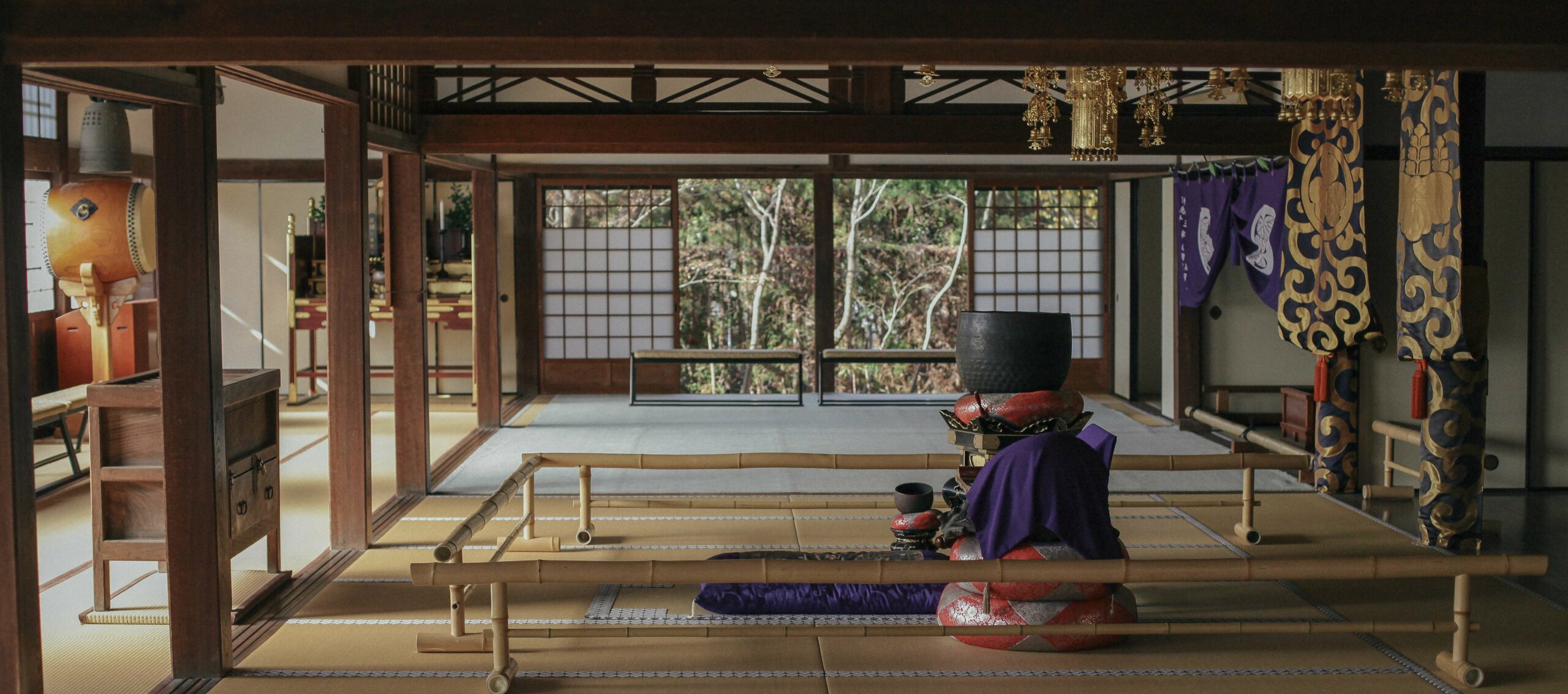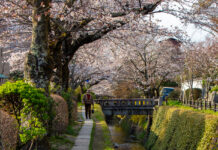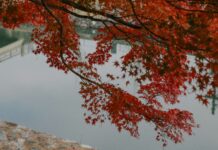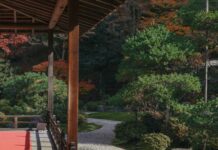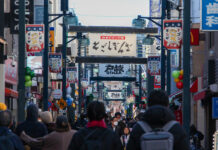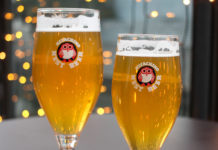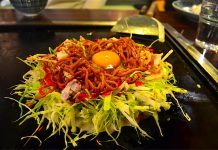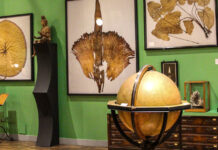Much of Kyoto — much of Japan, actually — is dualistic in nature. Two seemingly opposite truths can co-exist in ways which create a new sense of harmony, or well-styled dissonance. Genkо̄-an, situated in northwest Kyoto, is one such place.
Founded as a hermitage in the 1300s and dedicated to the school of Sо̄tо̄ Zen in 1694, Genkо̄-an is most well-known for its viewing windows, which thoughtfully frame the most picturesque aspects of the inner gardens. In summer, autumn, and winter the perfect circular cut-out frames views of verdant greens, crimson canopies, and silent snow. All elements are layered into a scene contrived with the same care and consideration as a formal painting. Although it isn’t in a remote location, Genkо̄-an is a little farther afield than Kyoto’s other well-known temples. All of its sliding doors open out onto garden scenery framed by trees; one can hear the sounds of a schoolyard in the middle of the day. The gentle repose of winter camellias and joyful laugh of young children are essential ingredients in the dissonance of Genkо̄-an; look up from the serene garden window, and you will see blood.
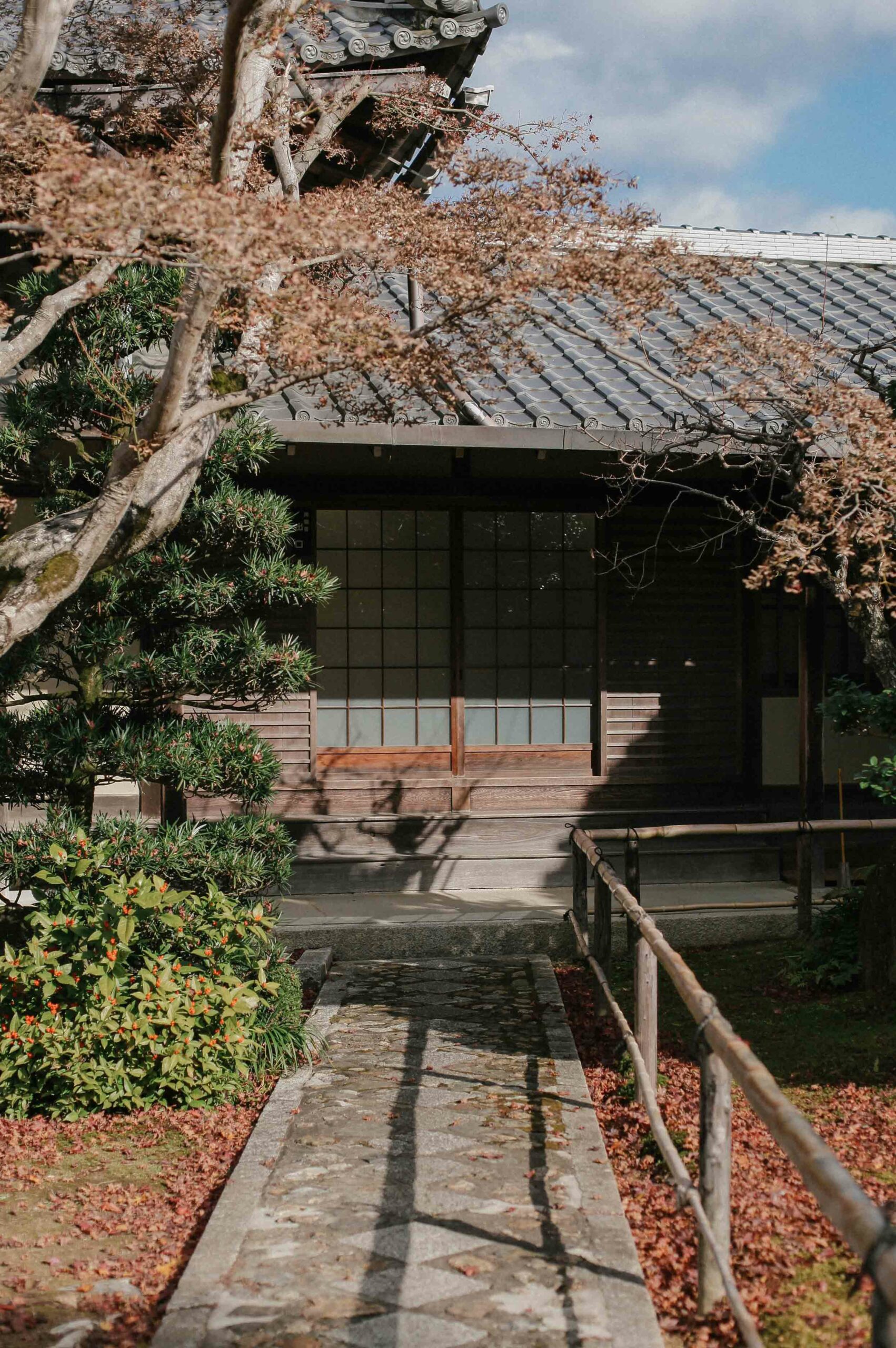
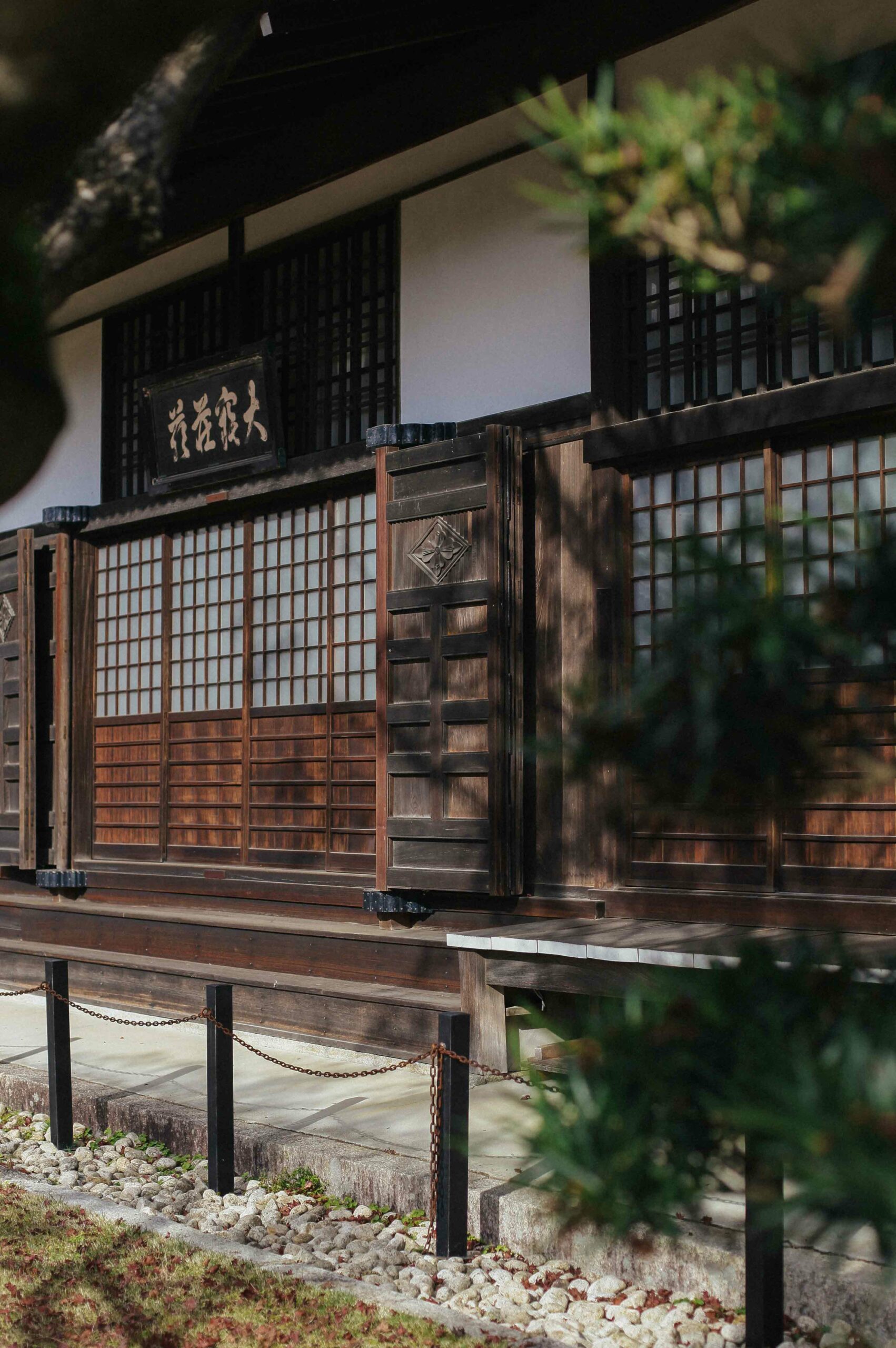
Genkо̄-an’s present hondо̄ (main hall) was completed in 1694, formalising its re-dedication as a Sо̄tо̄ Zen temple. Almost a century earlier, in 1600, rivers of blood were flowing across the wooden floors of Fushimi castle, far in the southern reaches of the Kyoto basin. The castle had been built for Toyotomi Hideyoshi, known as the ‘second great unifier of Japan’, at the end of the Sengoku Jidai (Warring States Period). Besieged by enemy forces, the garrison of 2000 men held out for weeks against an army of 40,000, providing a vital diversion from Hideyoshi’s other key seats of military power.
When all but a handful of the garrison were slain and resistance became futile, the remaining samurai committed seppuku (ritual suicide). The volumes of blood left for days to soak into the floors of the castle could not be scrubbed away or hidden by staining with oils. Handprints, footprints, and impressions of entire bodies were left in the wood. Fushimi’s samurai knew the castle would fall, but defended it with their lives. To honour this sacrifice and supposedly appease the spirits of the deceased, the floorboards were dismantled and repurposed, being shared out among five Buddhist temples in Kyoto and its surrounding areas. These haunting installations are known as ‘chitenjо̄’ (血天井).
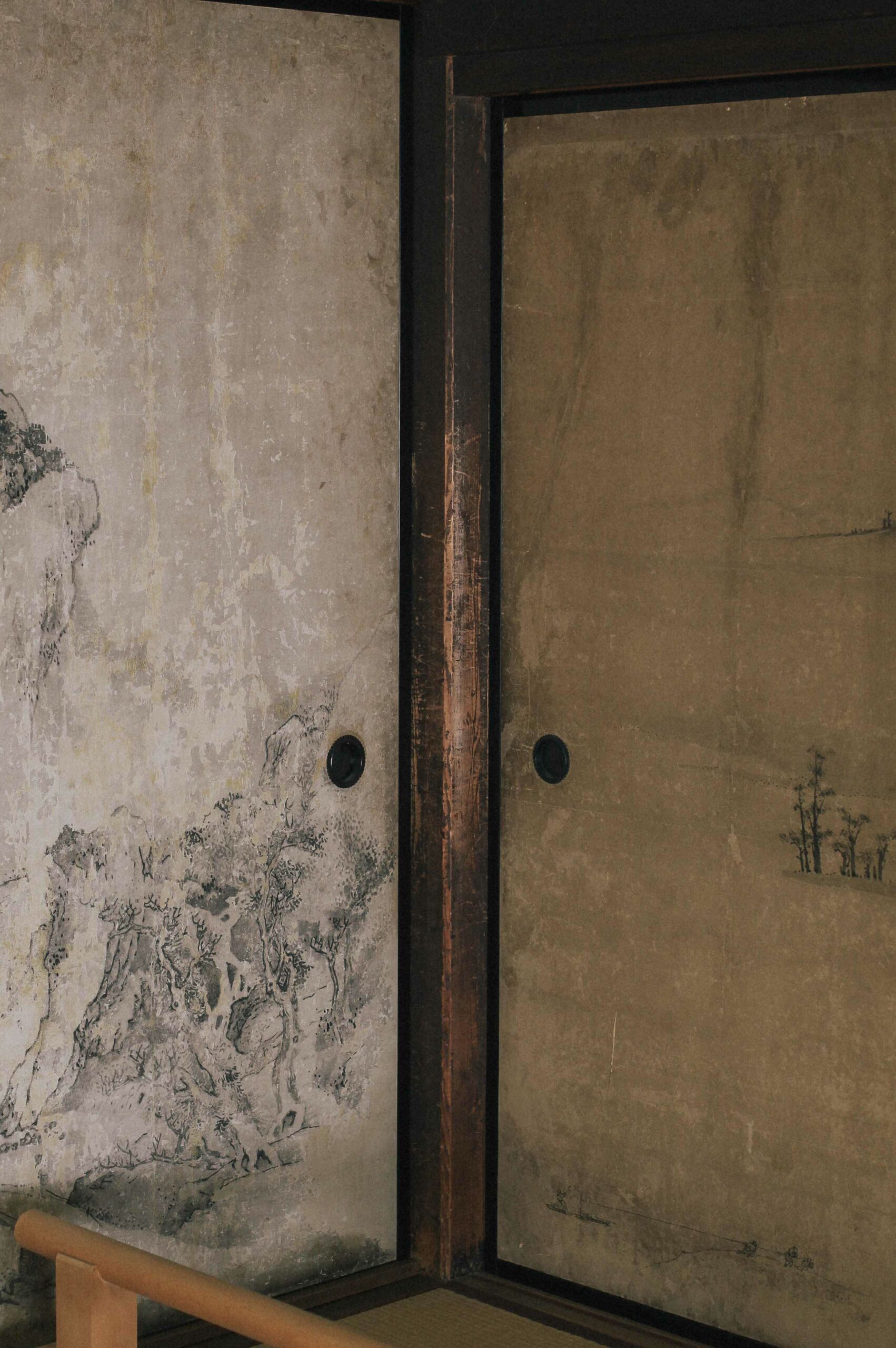
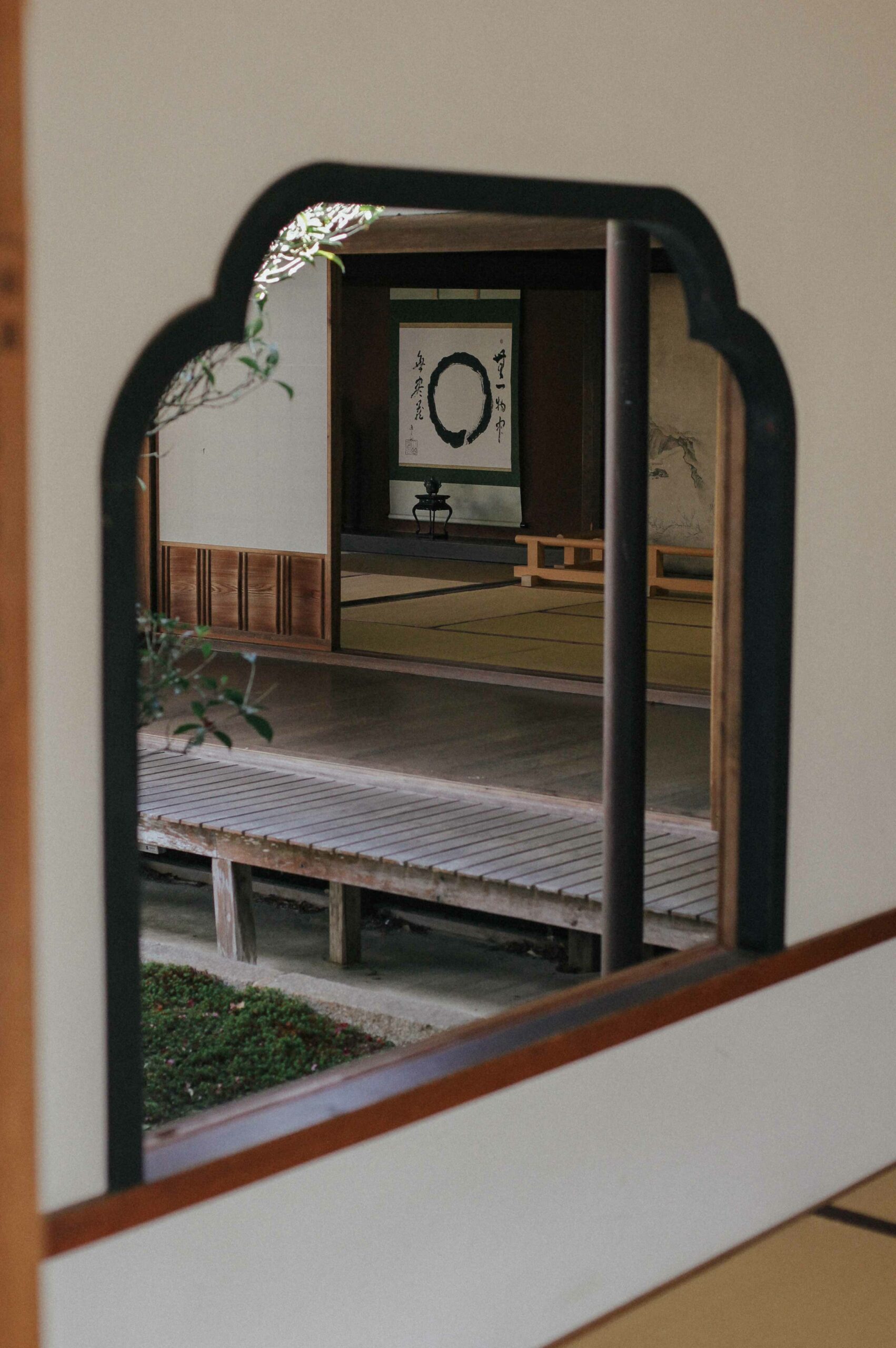
Surprisingly, this information isn’t widely known to foreign tourists visiting Kyoto; even many Japanese tourists seem unaware. Genkо̄-an is often filled with well-dressed women who come to have their photo taken next to the scenic garden windows. Few people seem to look upwards. The staff members manning the entry ticket window will casually mention that the “chitenjо̄ is in the main hall” in a manner so blasé that it’s easy to overlook. Perhaps, though, it’s because echoes of a bloody past don’t define Genkо̄-an so much as inform it. The temple’s sense of solitude and harmony is refined by a reminder that this peaceful world was born of blood.
Genkо̄-an has more than its fair share of non-ghoulish works of art, design, and history, though. These are likely bigger draws to this out-of-the-way location than the neck-ache inducing ceilings. Arriving at the temple, you’ll follow a paved stone path which twists left and right, past miniaturised Kitayama cedars and ending in an unusual pagoda, housing a cast-bronze temple bell. The front gate stands on clay-red soil, serving as a symmetrical frame to the temple’s hondо̄. Inside the gate, the first layer of gardens consists of wide swathes of soft moss, stone lanterns, and an arc of Japanese maple. This venerable tree takes on deep red hues in autumn, shedding star-shaped leaves which contrast richly with the evergreen moss beneath. The temple is often peaceful, being far from the easy reach of tour buses.
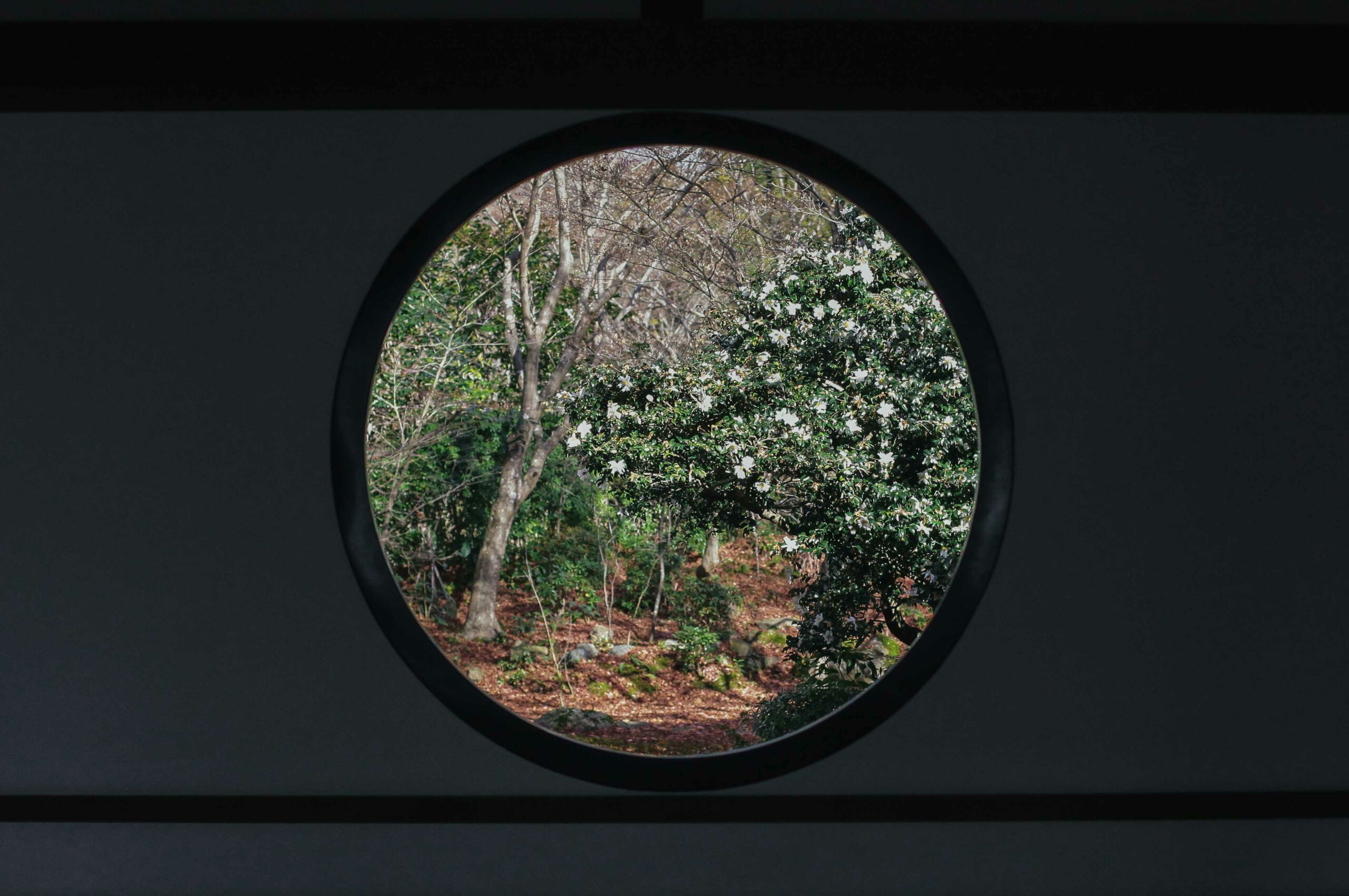
Entering the outer veranda of the temple, you pass through successive rooms containing small statues and a variety of fusuma (papered sliding doors), painted in soft washes of charcoal and grey. They depict the steep and rocky landscapes made popular by Chinese scrolls. Islands and trees are anchored in clouds, with no sense of the earth below. A rich incense fills these rooms, shifting the senses away from the frenetic pace of the outside world. Beyond these rooms lies the inner garden; mossy always, but cycling through seasonal shows of green and red maple, with white camellia blooming early in December. Each different angle aligns to create a changed scene and a new mood. Progressing further into the temple brings different views, with successive windows each framing a thoughtful composition. Some of the windows and doorways combine to lead the eye along straight lines in and out of the open rooms, coming to rest on stone lanterns, or a scroll painted with a single-line Ensо̄ (a circular motif in Buddhist art).
In the centre of the hondо̄, slashes of electrifying royal purple interrupt the softer wooden tones. They frame the Butsudan, a ledge space built specially to house the temple’s statue of the Buddha. Dangling curtains of golden chain surround an ornate lantern, swaying almost imperceptibly in the breeze that passes through the open doors. On the far side of the hall is an anteroom, housing hanging scrolls and scented with wisps of incense smoke. From here, children can be heard playing in a schoolyard at lunch time. Above you, more footprints set in blood.

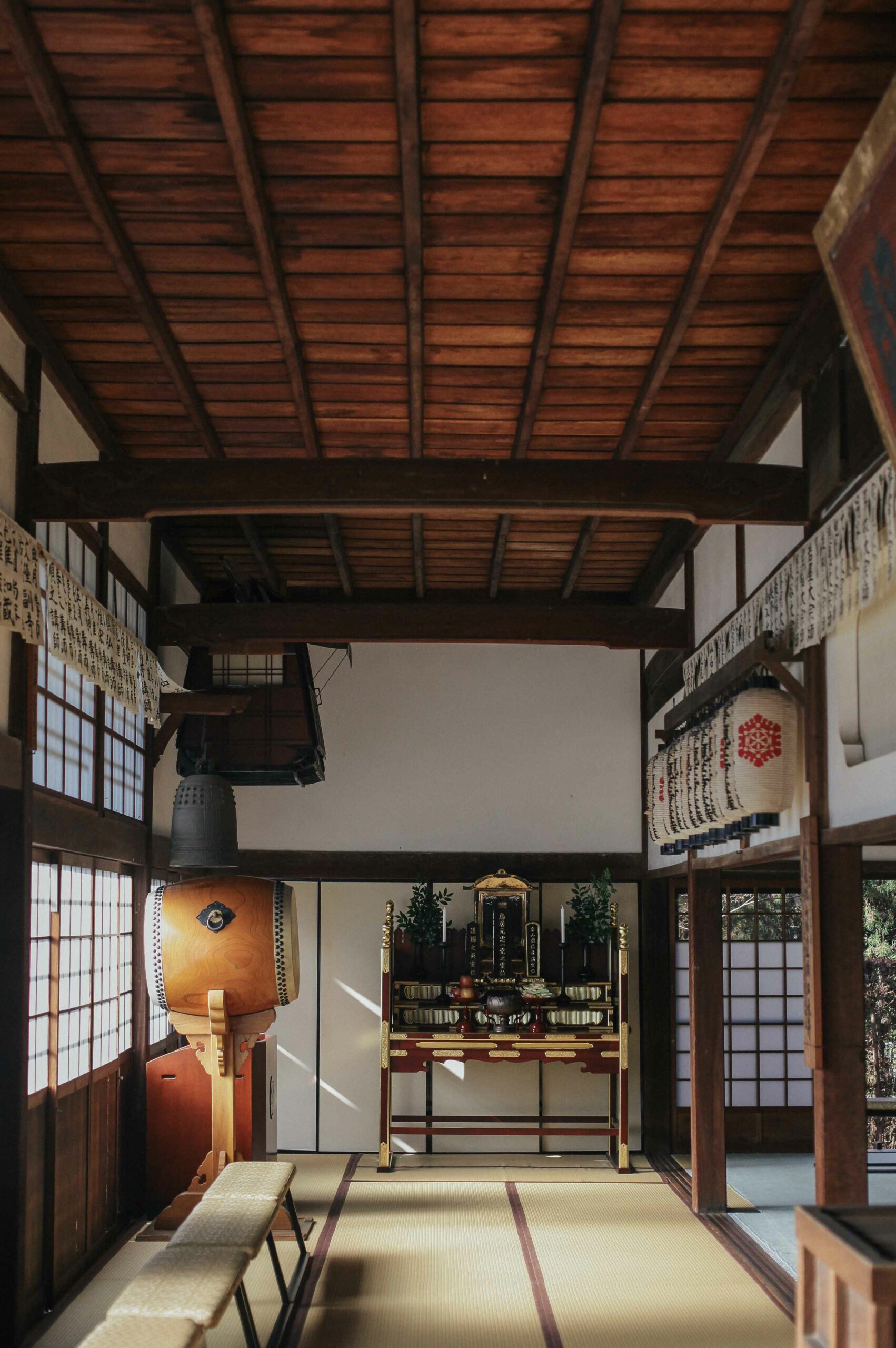
Exiting the main hall past a miniature temple bell and large wadaiko drum leads out to the final aspect of Genkо̄-an’s dual-sided design. Standing on a veranda before a hall containing works of calligraphy, you look back onto the entrance you originally entered through. From here, it is framed on its left by mature maple trees and its right by the ornate, twisted trunk of a long-dead pine. Intersected by stone pathways and planted with low hedges, the lines lead the eye to rest on the southern face of the hondо̄, bathed in sunlight, long shadows cast by the swaying trees.
The exit requires a return through the main hall, offering one last chance to cast your eyes over expertly layered gardens and morbid ceilings. The hallway connecting the hondо̄ and entrance looks out over a single stone lantern, set in exceptionally deep, velvety moss. When the sun shines, this adjoining space glows with a soft green light, inviting you to sit again and enjoy the pause offered by the tranquil surroundings.

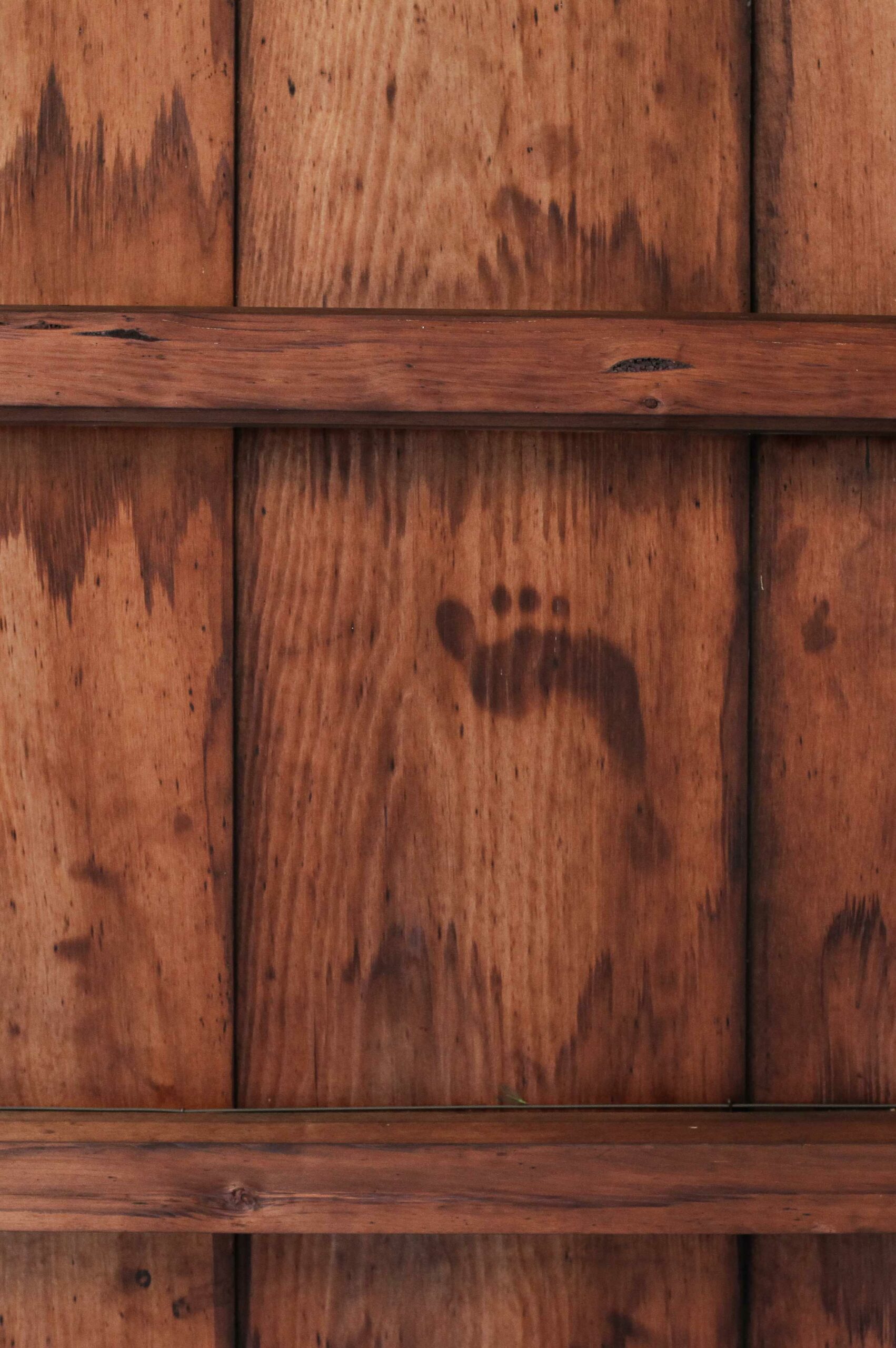
No trains serve this particular corner of northern Kyoto, so the city’s buses are the way forward. The buses stopping directly outside the temple are infrequent, but a twenty minute walk downhill from the site leads to a cluster of bus stops serving local university buildings, offering direct links to downtown Kyoto. The hill walk is a scenic one, flanked on both sides by traditional Kyoto architecture, including ornamental stone basins serving as outdoor ponds. Alternatively, you can visit both Genko-an and nearby Shо̄den-ji in one morning, with the walk between the two taking about fifteen minutes.
Shо̄den-ji is also home to ‘chitenjо̄’ blood ceilings, but unique to this temple is a ghostly white face staring back at you as you look up. Paranormal horrors aside, Shо̄den-ji first found international renown as the temple that helped David Bowie fall in love with Kyoto. To sit on its veranda and gaze out at the dry stone gardens as Bowie did would be a unique way to connect with the legacy of the man himself. Both Shо̄den-ji and Genkо̄-an can be considered temples for those looking to enjoy spaces well removed from Kyoto’s most popular locations; they are all the more rewarding for their peaceful and unhurried atmosphere.
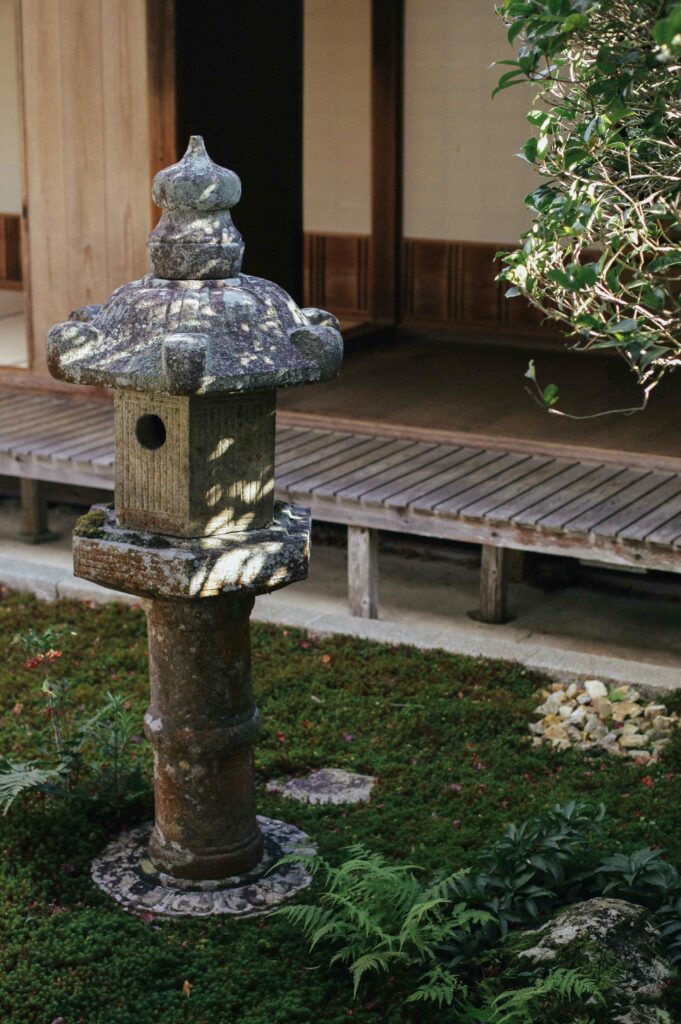
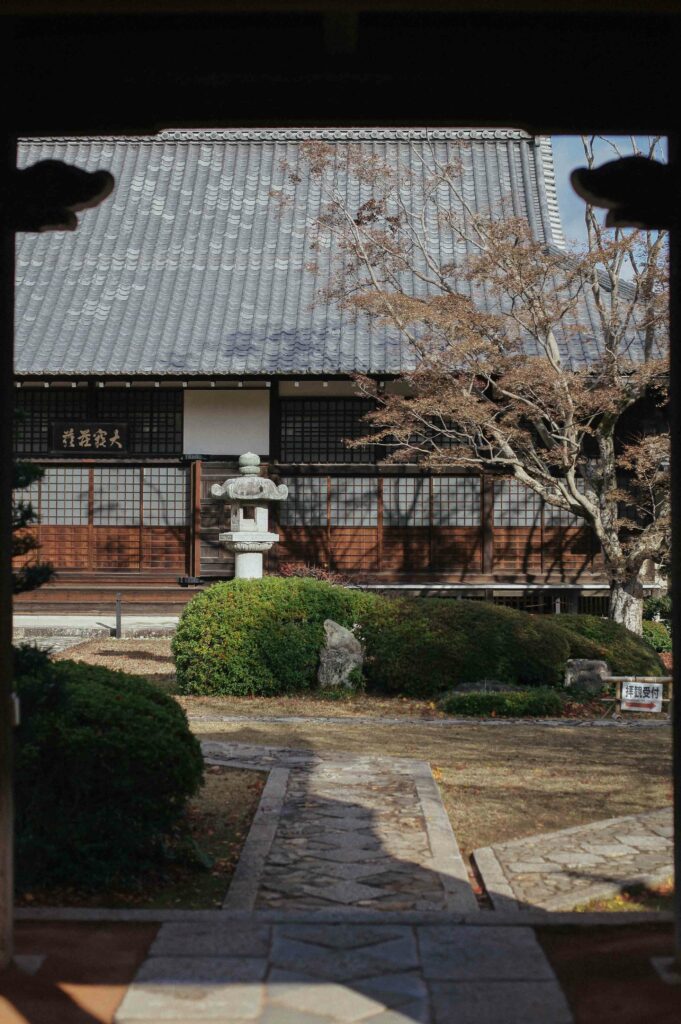
Access:
Kyoto City Bus numbers 6, 205 and 206 depart from Kyoto Station to the Senbon Kitaoji Bus Stop. From here, the walk to Genkо̄-an is a straight line.
Name: Genko-an
Address: 47 Takagamine Kitatakaminecho, Kita Ward, Kyoto, 603-8468, Japan
Open: 9:00am–5:00pm, 7 days a week, last entry 4:30pm
Admission: ¥400
Website: https://genkouan.or.jp/en/
Post by Japan Journeys.



